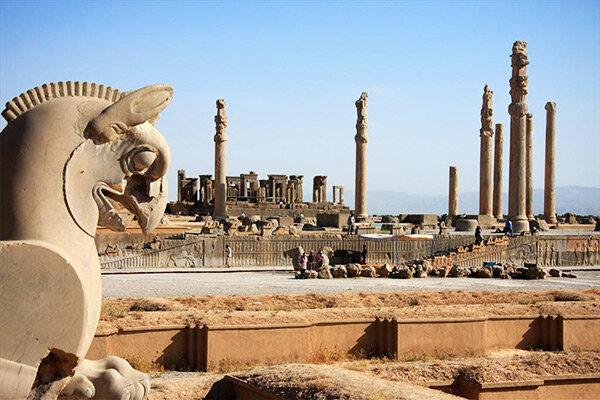Land subsidence threatens Achaemenid sites in southern Iran

TEHRAN - Experts have raised alarms over accelerating land subsidence near two of Iran’s most iconic archaeological sites – Naqsh-e Rostam, the necropolis of the Achaemenid kings, and Persepolis, the UNESCO-registered ceremonial capital of the Achaemenid Empire – as unsustainable agricultural practices continue in the fertile plains of Fars province.
According to Mehdi Zare, a senior professor at the International Institute of Earthquake Engineering and Seismology, ongoing excessive groundwater extraction for large-scale rice and maize cultivation in the Marvdasht plain has led to severe land subsidence. Visible ground gaps have now reached as close as 10 meters from Naqsh-e Rostam and between 300 to 500 meters from Persepolis.
Speaking during a recent expert panel on climate change and cultural heritage held at the Research Institute of Cultural Heritage and Tourism (RICHT), Zare warned that the rate of subsidence in the Marvdasht region has reached between 20 to 30 centimeters annually.
“This phenomenon not only threatens Iran’s invaluable cultural heritage but may also have implications for the activation of regional fault lines,” he said.
Zare called for urgent measures to control unregulated groundwater extraction and to revise agricultural policies that are exacerbating the crisis. “Overdrawing groundwater beyond recharge levels is unsustainable and dangerous,” he emphasized.
Another speaker at the meeting, Hamid Fadaei, faculty member at the Conservation and Restoration Research Institute, echoed these concerns, stating that continued rice farming – a crop historically alien to the region – is now posing a significant threat to both the province’s natural resources and its ancient heritage.
“Rice cultivation has no historical precedent in Fars and contradicts the region’s traditional agricultural practices,” Fadaei said. “During the Achaemenid era, this region was a major provider of grains, vegetables, and livestock, not rice.” He described the current agricultural approach as a modern misstep, urging authorities to shift focus toward sustainable practices and heritage-based development.
Fadaei also underscored the potential of local cultural heritage and handicrafts as viable alternatives for economic growth. “We’ve ignored the region’s heritage assets in favor of heavy industry, but these resources can and should be revitalized,” he stated.
Both Naqsh-e Rostam and Persepolis attract global attention for their historical significance and architectural grandeur.
AM
Leave a Comment